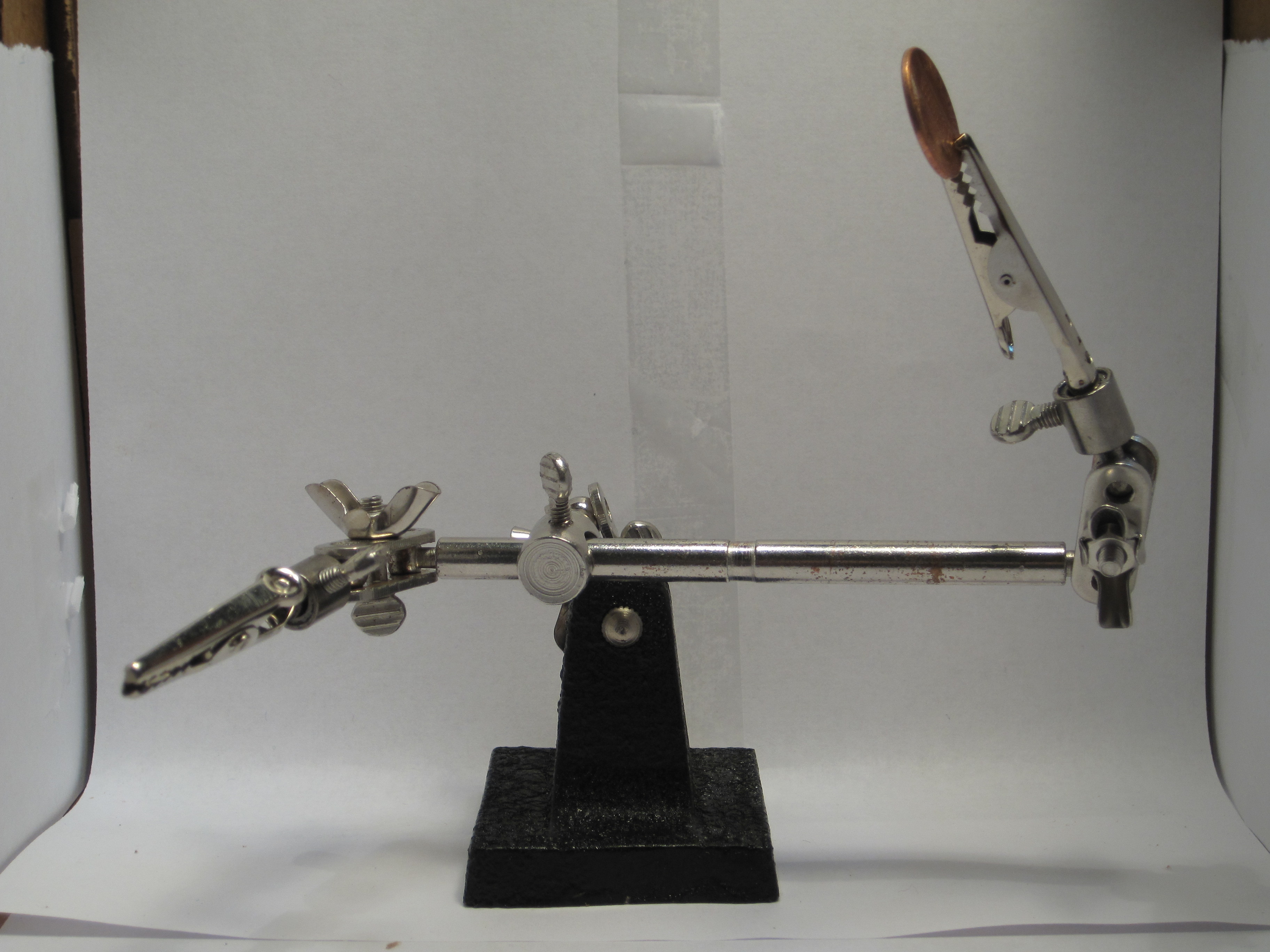Your first step is to arrange your camera and SLR lens to line up correctly so you can take pictures through the prime. The prime must be mounted backwards to magnify subjects.
Clamp your subject in the third arm tool, or any other way that is easily adjusted. Coins work the best to start out with.
Camera settings are very important. I have had the best results using the highest f-stop on the camera and manual focus. You can get away with autofocus, but it can be frustrating if you plan on taking lots of macros. No flash, and set a two-second timer so that your hand pressing the button doesn’t shake the camera. ISO around 200-400; the lower the better. No image stabilization; this can actually blur your pictures.
Your depth of field is going to be VERY small; less than a millimeter. Focusing is controlled by carefully adjusting the third arm tool back and forth until the subject is in focus. Unless your subject is nearly flat, it will be impossible to focus the whole image. I usually set the focus range on the camera, and adjust the subject until it is focused.
Adjust your lighting to come from opposite sides, eliminating shadows. Draping a cloth over the prime and camera lens will reduce glare in the gap between lenses.
Snap the picture. It may take several tries to get your subject perfectly in focus. I found it very addictive! Try taking pictures of Lincoln’s statue between the center columns of the Lincoln Memorial on the back of a penny.
In order: The inner workings of an ultraviolet-light-erased EEPROM used before flash memory, a match head, and some white foam.
If you try this method, please share your results and post a link or photo in the comments.
In order: The tip of a ball-point pen, a salt grain, and the border of a $5 bill.
Conclusion
If you want to see more pictures, I've posted some results online but I encourage you to try this yourself. Prime lenses can be found for as little as 30 or 40 dollars on sites like eBay, and the results are incredible for what you put into this project.






















